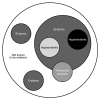Mycotic Infections Acquired outside Areas of Known Endemicity, United States
- PMID: 26485441
- PMCID: PMC4622235
- DOI: 10.3201/eid2111.141950
Mycotic Infections Acquired outside Areas of Known Endemicity, United States
Abstract
In the United States, endemic mycoses--blastomycosis, coccidioidomycosis, and histoplasmosis--pose considerable clinical and public health challenges. Although the causative fungi typically exist within broadly defined geographic areas or ecologic niches, some evidence suggests that cases have occurred in humans and animals not exposed to these areas. We describe cases acquired outside regions of traditionally defined endemicity. These patients often have severe disease, but diagnosis may be delayed because of a low index of suspicion for mycotic disease, and many more cases probably go entirely undetected. Increased awareness of these diseases, with a specific focus on their potential occurrence in unusual areas, is needed. Continued interdisciplinary efforts to reevaluate and better describe areas of true endemicity are warranted, along with a more nuanced view of the notion of endemicity. The term "nonendemic" should be used with care; mycoses in such regions might more accurately be considered "not known to be endemic."
Keywords: United States; blastomycosis; coccidioidomycosis; endemicity; fungal; fungi; histoplasmosis; lung diseases; mycoses.
Figures

References
-
- Benedict K, Roy M, Chiller T, Davis JP. Epidemiologic and ecologic features of blastomycosis: a review. Curr Fungal Infect Rep. 2012;6:327–35 .10.1007/s12281-012-0110-1 - DOI
-
- Martin DS, Smith DT. Blastomycosis I; a review of the literature. Am Rev Tuberc. 1939;39:275–304.
Publication types
MeSH terms
LinkOut - more resources
Full Text Sources
Other Literature Sources
Medical

